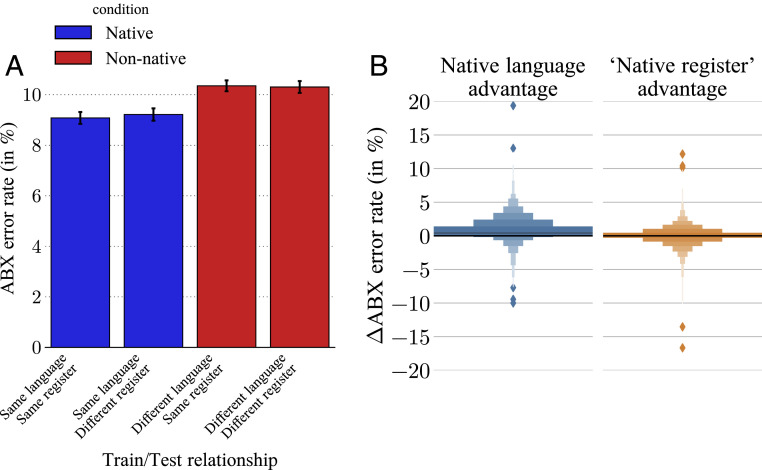Fig. 2.
(A) Average ABX error rates over all consonant and vowel contrasts obtained with our models as a function of the match between the training-set and test-set language and register. Error bars correspond to plus and minus one SD of the errors across resampling of the test-stimuli speakers. The native (blue) conditions, with training and test in the same language, show fewer discrimination errors than the nonnative (red) conditions, whereas there is little difference in error rate within the native and within the nonnative conditions. This shows that the models learned native-language-specific representations that generalize across register. (B) Letter-value representation (94) of the distribution of native advantages across all tested phonetic contrasts (pooled over both languages). The native-language advantage is the increase in discrimination error for a contrast of language L1 between an “L1-native” model and a model trained on the other language for the same training register. The “native register” advantage is the increase in error for a contrast of register R1 between an “R1-native” model and a model trained on the other register for the same training language. A native language advantage is observed across contrasts (positive advantage for of all contrasts), and there is a weaker native register advantage (positive advantage for of all contrasts).

